1. Chevrolet Camaro
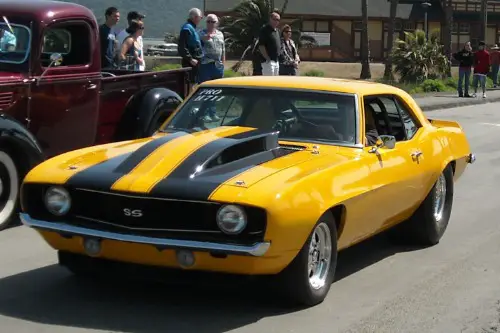
The Chevrolet Camaro has long been an American muscle car icon, but its future in the U.S. is uncertain due to tightening emissions standards. With the auto industry moving towards electric vehicles (EVs), the Camaro’s gas-guzzling performance is a challenge to sustainability goals, CNET warns. By 2030, cars that don’t meet specific fuel efficiency standards or rely on internal combustion engines may face serious restrictions or bans. As the government pushes for cleaner air, the future of high-performance muscle cars like the Camaro could be in jeopardy.
Additionally, the Camaro’s massive carbon footprint is at odds with the green energy revolution gaining ground in the automotive world. While some Camaro enthusiasts will resist the change, there’s a growing push for electric alternatives. Automakers are already working on electric muscle cars, which could render traditional muscle cars like the Camaro obsolete. By the time 2030 rolls around, we may see its successor in the form of an EV powerhouse, but the original model could be left behind.
2. Ford Mustang
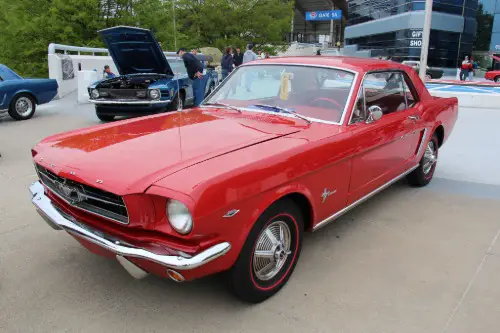
The Ford Mustang is another performance vehicle that could face restrictions in the coming years, according to Ford Authority. The Mustang’s powerful V8 engine, while beloved by enthusiasts, contributes significantly to air pollution, making it a target for stricter regulations. The U.S. government has set ambitious climate goals, which will likely mean fewer gas-powered vehicles on the road. The Mustang may be forced to evolve into a fully electric version, but the current model could be banned or heavily restricted by 2030.
Even though Ford has already begun investing in electric vehicles with models like the Mustang Mach-E, traditional gas-powered Mustangs are slowly becoming a relic of the past. By 2030, it may not make sense to continue selling high-polluting vehicles in a world where EVs dominate. In addition, several states are pushing for a ban on the sale of new gasoline-powered cars by 2035, putting pressure on automakers to phase out these models. The Mustang’s days as we know it might be numbered unless Ford accelerates its transition to electric power.
3. Dodge Charger
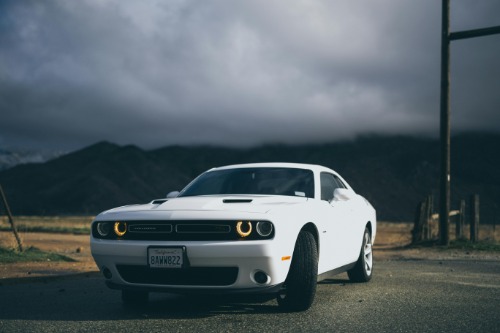
The Dodge Charger, with its aggressive design and roaring engines, could face a ban soon, CNBC reports. Like the Camaro and Mustang, the Charger is a symbol of American muscle, but its reliance on high-emission gas engines is increasingly unsustainable. By 2030, all new vehicles may be required to meet stricter fuel efficiency and emissions standards that the Charger’s powerful V8 engine simply can’t meet. If Dodge doesn’t pivot toward electric technology, the Charger could be one of the cars banned from sale in the U.S.
Dodge is already planning to release an electric version of the Charger, called the “Charger Daytona SRT,” but it’s still unclear how soon this new model will be able to fully replace the traditional muscle car. As stricter emission regulations come into play, the current model could face discontinuation, especially if it doesn’t meet these regulations. Given the growing shift toward electric vehicles, the Charger may soon be seen as a thing of the past, unable to keep up with the industry’s green shift. For now, it remains unclear if Dodge can make the transition fast enough.
4. Toyota Land Cruiser
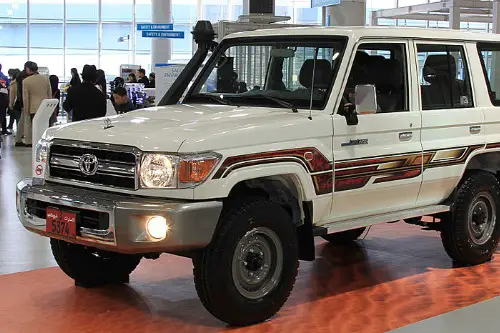
The Toyota Land Cruiser has long been revered for its off-road capabilities, but its hefty size and high emissions are putting its future in question. The model is no stranger to low fuel efficiency, making it a target as the U.S. pushes for more sustainable transportation. With the Biden administration’s ambitious climate goals, large, gas-guzzling SUVs like the Land Cruiser are on the chopping block for a possible ban by 2030. Unless Toyota produces an electric or hybrid version of the Land Cruiser, it may be discontinued, according to Motor1.
The Toyota Land Cruiser’s legacy of rugged reliability and performance is being overshadowed by a growing shift toward more eco-friendly and fuel-efficient SUVs. While the Land Cruiser is beloved in certain circles, its size and inefficiency make it a challenge to align with stricter environmental regulations. The car market is quickly evolving, and by 2030, large gas-powered vehicles may simply no longer be feasible for sale. If Toyota can’t pivot soon, the Land Cruiser could be yet another casualty of this rapidly changing landscape.
5. Jeep Grand Cherokee
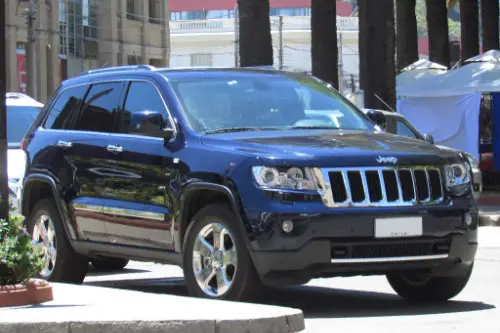
The Jeep Grand Cherokee has been one of the most popular mid-size SUVs in the U.S., but its future may be threatened by environmental concerns, The Guardian reports. While Jeep has introduced hybrid versions, its gas-powered models are still the majority. The U.S. government is likely to phase out these inefficient vehicles as it doubles down on its zero-emissions goals. By 2030, we could see the Grand Cherokee line go electric or be banned entirely, especially in states with the toughest environmental laws.
One of the major reasons the Grand Cherokee could face restrictions is the increasing number of cities and states banning or limiting new gasoline-powered vehicle sales. While hybrid and electric variants are part of Jeep’s strategy, the shift may not come quickly enough to save the traditional model. The future of SUVs like the Grand Cherokee may lie in electric motors, but by 2030, the current combustion engine version could be a thing of the past. Without fast action on a sustainable model, the Grand Cherokee may no longer be available in the U.S.
6. GMC Sierra 1500
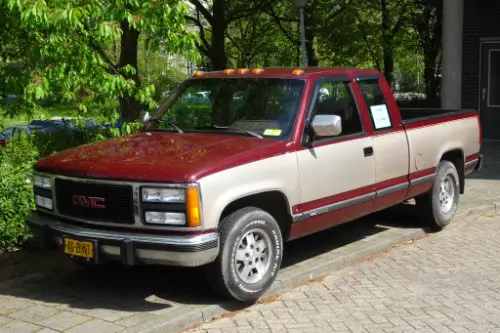
The GMC Sierra 1500, one of the top-selling full-size trucks in the U.S., could soon be banned due to the U.S. government’s commitment to reducing carbon emissions. Trucks like the Sierra 1500, while highly popular, typically feature high-powered, fuel-hungry engines that fail to meet the strict environmental standards coming in the next decade. The transition toward electrification means that gas-powered trucks like the Sierra could face increasing limitations in the years to come. By 2030, models like this could be banned unless GMC moves swiftly to develop an electric version.
While GMC has introduced electric trucks like the Hummer EV, the traditional gas-powered Sierra is in danger of being phased out as the electric truck market grows. The pressure to meet zero-emissions targets is pushing many automakers to focus on electric models to ensure their survival. If the Sierra 1500 doesn’t evolve, it could be banned from U.S. dealerships by the time 2030 arrives. With electric trucks already gaining traction, the gas-powered Sierra’s future is uncertain.
7. Nissan Titan
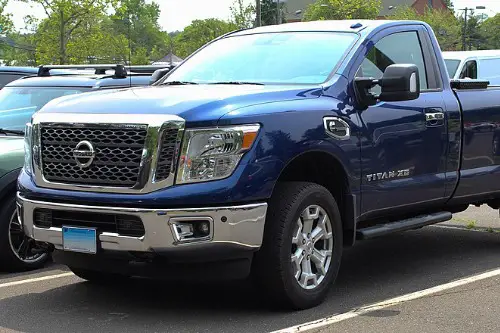
The Nissan Titan, like the GMC Sierra, is a full-size truck that relies heavily on gasoline-powered engines, which could be problematic as the U.S. government steps up its emissions regulations. The Titan’s efficiency issues and fuel consumption are likely to put it on the chopping block, especially as the push for electric and hybrid vehicles intensifies. With truck enthusiasts leaning toward greener alternatives, Nissan may struggle to keep the Titan in production unless it transitions to electric power. The Nissan Titan could face being banned or severely limited by 2030 if it fails to meet future environmental standards.
Nissan has already hinted at moving toward electrification with models like the Ariya, but it hasn’t yet announced any major plans for an electric truck. With the massive shift toward EVs in the automotive world, the gas-powered Titan could be left behind if Nissan doesn’t adapt. Even though the Titan has a loyal following, the pressure to meet zero-emission vehicle mandates could force Nissan to abandon the model. If they can’t innovate quickly, the Titan may become a relic of the past.
8. Ram 1500
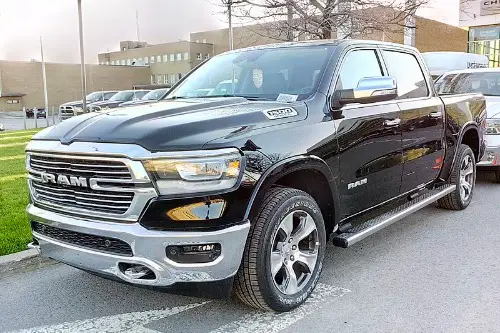
The Ram 1500, a leader in the pickup truck market, could be one of the vehicles to face bans in the U.S. due to emissions regulations. Its powerful V8 and V6 engines, which offer excellent performance but low fuel efficiency, are becoming increasingly incompatible with the government’s environmental goals. By 2030, there may be a clear push to ban the sale of gas-powered vehicles, and pickup trucks like the Ram 1500 will likely be impacted. The Ram 1500 could see its reign come to an end unless FCA (Fiat Chrysler Automobiles) accelerates its transition to electric trucks.
Ram has already made strides toward EVs, with the 1500 REV, an all-electric version of the popular truck. However, the traditional gas-powered Ram 1500 is still a dominant force in the market. As the U.S. government continues to ramp up its environmental policies, gas-powered trucks like the Ram 1500 may soon become a thing of the past. Unless electric models become the standard by 2030, Ram 1500’s future looks uncertain.
9. Cadillac Escalade
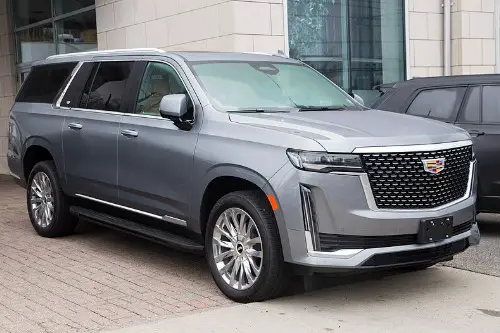
The Cadillac Escalade, an icon of luxury SUVs, is facing possible bans due to its high fuel consumption and hefty carbon footprint. Despite its luxurious appeal and strong market presence, the Escalade’s large size and reliance on internal combustion engines make it a target for environmental regulations. By 2030, the Escalade may no longer meet the fuel-efficiency standards required to remain on the market in the U.S. Unless Cadillac transitions to a fully electric version, the iconic Escalade could be discontinued or banned from sale.
Cadillac has already announced plans to develop electric vehicles, with the Lyriq being one of its first steps into the EV world. However, the Escalade’s traditional, gas-guzzling model is still in high demand, especially among wealthy consumers. As pressure mounts for automakers to embrace electric power, the Escalade’s future may rest on whether Cadillac can keep up with the shift. By 2030, we might see a reimagined electric version of the Escalade, but the old model could be off the roads.
10. Toyota 4Runner
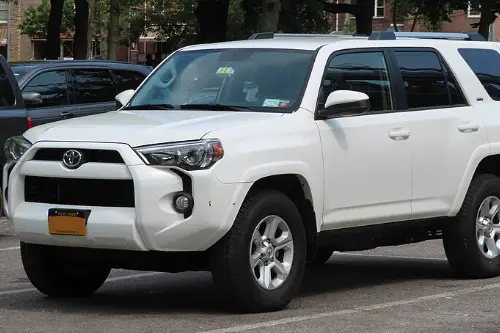
The Toyota 4Runner has been a go-to for off-road enthusiasts for years, but its future in the U.S. is uncertain due to its reliance on a traditional gasoline engine. With the U.S. increasingly pushing for EV adoption, models like the 4Runner that have high emissions may find it harder to stay on the market. By 2030, all vehicles might need to meet stricter emissions standards, and unless Toyota pivots to electric or hybrid versions, the 4Runner could be banned. The company has not made significant moves to electrify the 4Runner, making its future unclear.
Despite its popularity, the 4Runner’s fuel inefficiency is at odds with the rising demand for greener vehicles. The growing number of electric off-road options may mean that the 4Runner’s gas-powered engine could be phased out. If Toyota doesn’t accelerate its transition to an electric 4Runner, the beloved off-road vehicle might be left behind. By 2030, the 4Runner may no longer be able to keep up with evolving automotive trends and emissions rules.


